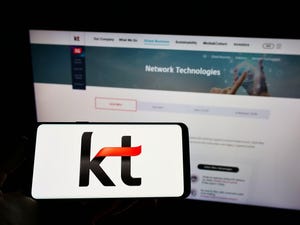Optical Switching Gets Flexible
Components vendors are developing a new generation of small, configurable switches for optical networks UPDATED 3/4 1:30 PM
March 1, 2002

Several optical components makers will use the upcoming Optical Fiber Communication Conference and Exhibit (OFC) to showcase new configurable optical switches that are smaller and more flexible than today's wares.
It's already starting: Today SpectraSwitch Inc., a startup specializing in liquid crystal technology, unveiled an eight-channel, reconfigurable optical switch geared to makers of metropolitan network equipment (see SpectraSwitch Unveils Wave of Products). It plans to show the new part at the conference as an alternative to larger, bulkier optical switch modules.
The SpectraSwitch product is among the first components to surface that claim to be "reconfigurable": that is, flexible enough to accommodate dynamic channel changes and able to fit a variety of needs for manufacturers of optical switching systems.
For instance, SpectraSwitch says the same small part can be used to create an add/drop multiplexer, a DWDM terminal, or an optical switch. Because the same tools are used to create and modify each part, manufacturers save money on retooling.
"Most people think of components as a fixed commodity," says SpectraSwitch CEO Lindsay Austin. "We think [our product] has the flexibility of a module, with the compactness of a component."
Austin says the component, dubbed the WaveWalker IOC, owes its virtues to liquid-crystal technology, in which the polarization of light is changed via filters in order to achieve passing, dropping, or attenuation of wavelength channels (see Optical Switching Fabric, page 7). Because it doesn't rely on moving parts, it is more durable, longer lasting, and cheaper to make than parts based on techniques such as MEMS (micro-electro-mechanical system), Austin says.
SpectraSwitch's WaveWalker measures five inches square by half an inch high and supports up to 64 100GHz channels via thin-film filters, according to the vendor.
According to SpectraSwitch marketing director Denise Oliver, the company sees its key opportunity in selling to OEMs that are looking for 32 to 64 channels in their optical switch components. That appears to put the company in line with makers of metropolitan-area networking gear. To support higher channel counts, such as those presently being eyed for long-haul networks, Oliver says SpectraSwitch plans to use different filters to accommodate narrower channel spacing. But she says this probably won't happen until 40-Gbit/s takes off, which won't occur for some months yet.
SpectraSwitch is among the first liquid-crystal component makers to offer a reconfigurable switch of the type that can be used to selectively add, drop, or pass channels. Rival Chorum Technologies Inc., for instance, offers reconfigurable simple switches based on liquid-crystal technology, but no reconfigurable OADMs (optical add/drop multiplexers). Chorum says it will unveil a new product family geared to this segment at OFC.
Others also plan OFC unveilings. Corning Inc. (NYSE: GLW), which announced its liquid-crystal PurePath Spectral Equalizer at OFC a couple of years ago (see Corning Boosts PurePath Production), plans to show newer, smaller versions of that product at the show.
Corning's PurePath Spectral Equalizer isn't, strictly speaking, a switch. Instead, it is designed to optimize the use of amplifiers by varying the attenuation of light, in a "select and broadcast" approach. But spokespeople have long said that the technology used in the PurePath can be readily adapted to optical switching. It's not yet clear and hasn't been confirmed, however, whether this is what Corning will unveil at OFC.
So far, liquid crystal appears to be making inroads in reconfigurable optical switches. Makers of MEMS switches haven't provided similar parts yet, although they're working on it. JDS Uniphase Inc. (Nasdaq: JDSU; Toronto: JDU), for example, plans to show configurable optical switch components at OFC, based in part on the technology it announced last week (see JDSU: MEMS Aren't Just Memories).
— Mary Jander, Senior Editor, Light Reading
http://www.lightreading.com
You May Also Like










